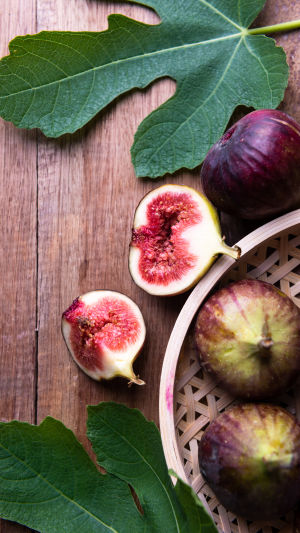The fig fruit is known for its sweetness, softness, and stickiness. It lacks a kernel and has a very thin skin, making it suitable for people of all ages due to its high nutritional value.
Figs have gained popularity among an increasing number of individuals, and as a result, fig-planting projects have gained traction.
There is a greater variety of figs available now, with enhanced flavors. Coupled with the unique medicinal and nutritional value figs offer, they have emerged as star fruits that many people enjoy. While the process of planting figs is not overly complex, achieving a good yield requires proper pruning techniques.
1. Shaping the Trees
To start, it's essential to shape the trees according to your planting plan. Different tree shapes, such as horizontal X-type or natural upright forms, come with their distinctive features.
2. Annual Branch Pruning
An effective method is the annual branch pruning. After trimming, new branches tend to sprout more easily. This practice promotes new growth and helps maintain the desired tree shape.
Annually, shortcuts can be applied to the main branches' extension branches, fostering overall branch development. For longer branches, a light shortcut is advised alongside moderate thinning to encourage the growth of fruitful branches.
3. Thinning for Better Canopy
Thinning aims to enhance canopy ventilation, control tree growth, and concentrate nutrients for fruit development. Overcrowded side branches, weak ones, and lengthy branches should be pruned. Even newly developed branches might need removal to ensure proper nutrient distribution.
4. Retraction Pruning
Retraction pruning is particularly beneficial for weak trees and branches. By pruning, the number of branch buds on the periphery or apex decreases. This allows more light to reach the inner parts of the tree, aiding flower and fruit growth. This method is often applied to main branches and branches designated for fruiting.
5. Pinching for Controlled Growth
Pinching focuses on curbing excessive growth and promoting branching. By trimming the new tips during peak growth, secondary branches can develop, expanding the canopy. This approach is especially useful for young trees. Pinching also encourages early maturity by promoting bud differentiation, usually done between mid-July and early August.
6. Bud Removal during Growth
Wiping buds involves removing side buds while the figs are growing. This technique reduces nutrient consumption, prevents lengthy new shoots, and maintains proper light and ventilation. While it's best to start early, finding the right timing is crucial to avoid hindering overall tree growth.





